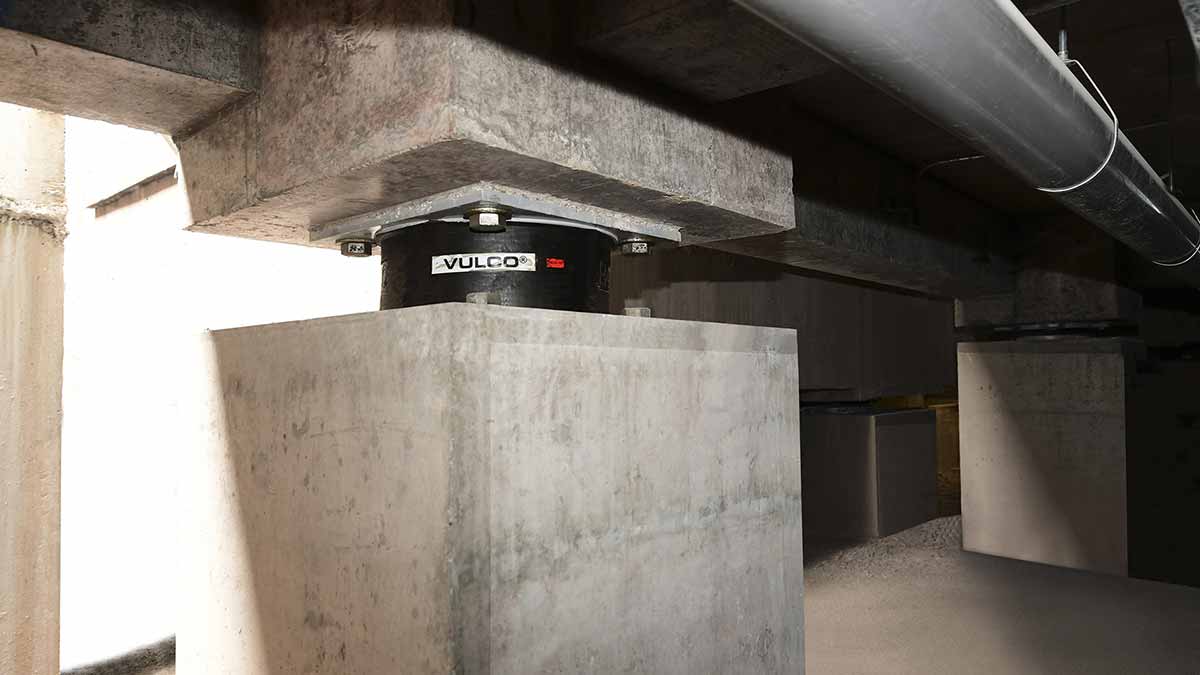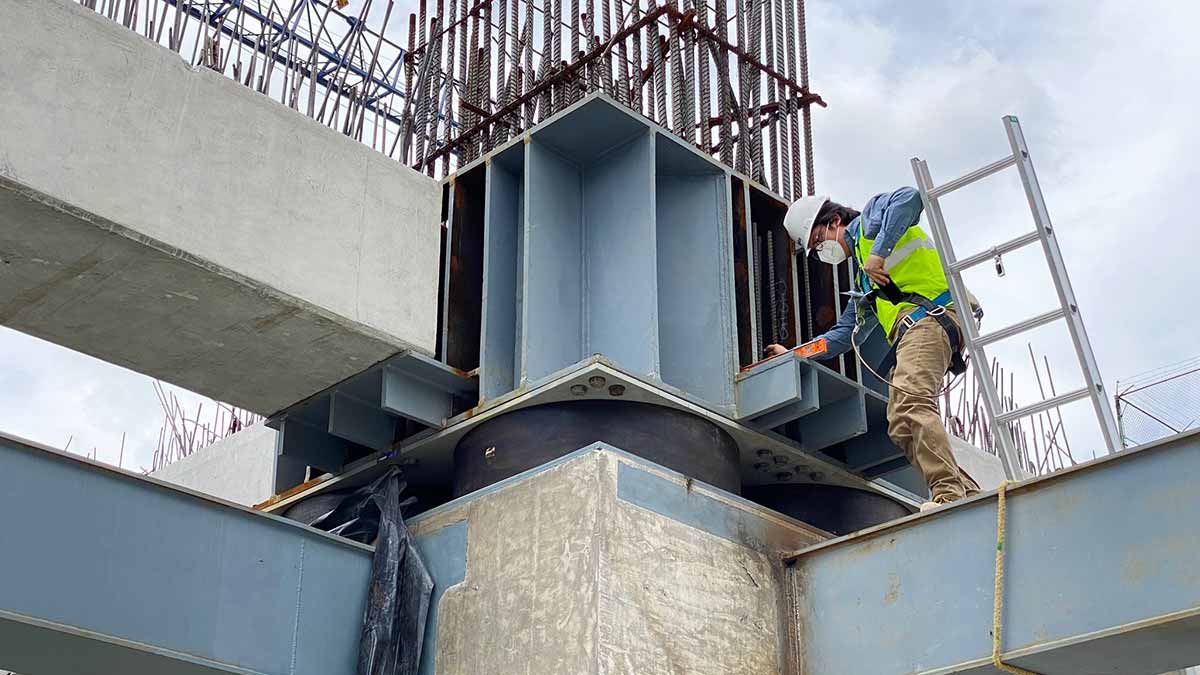“Seismic isolators” are devices installed at the base of pillars and in the foundations of buildings to mitigate the effect of seismic movements on them. Composed mainly of elastomeric materials and sliding surfaces, they absorb the energy generated by earthquakes and prevent its transmission to the structure above.
One of the advantages of installing seismic isolators in a building is that they improve its seismic resistance, without making it heavier or more rigid. Consequently, in addition to effectively protecting the building from earthquakes, seismic isolators reduce the economic requirements for their construction compared to other alternatives for making them safe, and increase flexibility in their design and architecture.

Their application is crucial for the safety of life-saving buildings such as hospitals. During a crisis, after an earthquake, hospitals cannot interrupt their operations, not only because of the patients they already house, but also because of the injured who are expected to arrive as a result of the geological phenomenon. This is why the use of seismic isolators is becoming increasingly common in this type of construction.
In addition to enabling hospitals to function, seismic isolators also protect investments in highly sensitive medical equipment, which could be damaged by the shaking and vibrations generated by earthquakes. In addition, they significantly reduce costly building repair costs, should the building be affected by the earthquake.
For these reasons, engineering solutions using seismic isolators in construction are gradually gaining ground in areas of high seismic risk, such as Chile, Peru or Japan. In these countries we find clear examples of the effectiveness of seismic isolator technology in the preservation of lives and property, and in the continuity of critical services during seismic tremors.
By Jorge Laguna, head of the Structures section of Amusement Logic’s Architecture Dept.






